Kindly note that excepting one photo, all other images and accompanying captions printed below do not appear in the original Arab News report. For more on the Sassanians, Ctesiphon and their architecture see:
- The Sassanians
- World History Encyclopedia: Ctesiphon
- Farrokh, K., Karamian, Gh. & Karamian, H. (2021). Military Architecture and the Four-Spāhbed System for Defense of the Sassanian Empire (224-651 CE). HISTORIA I ŚWIAT: ACTA MILITARIA IRANICA, 10, pp.117-151. (pdf for download in academia.edu)
= = = = = = = = = = = = = = = = = = = = = = = = = = = = = = = = = = = = = = = = = = = = = = = = = = = = = = = = = = = = =
Iraq’s 1,400-year-old Arch of Ctesiphon, the world’s largest brick-built arch, is undergoing restoration work as part of efforts to return it to its former splendour, authorities noted in September 2021.
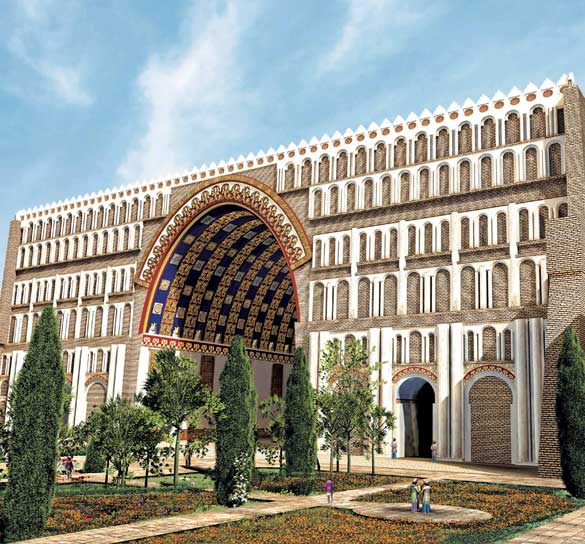
A reconstruction of Ctesiphon as it may have appeared in the 6th and early 7th centuries CE (Source: Sunrisefilmco.com in Pinterest).
The famed sixth-century monument, located around 30 kilometres (20 miles) south of the capital Baghdad, is the last structure still standing from the ancient Persian imperial capital Ctesiphon. Restoration work on the arch, also known as Taq-i Kisra from its Persian name, was carried out in 2013 after a massive slab fell off due to damp caused by heavy rain.
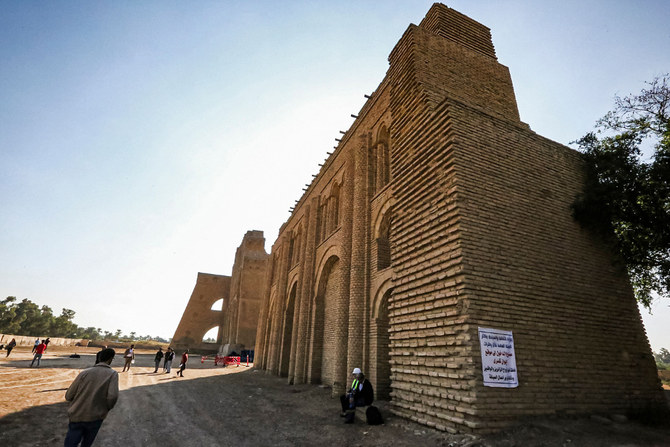
The above photo taken on November 24, 2021 shows a lateral view of the Arch of Ctesiphon, also known as Taq Kisra (Khosrow’s Arch), stands before the conservators’ scaffolding at the ancient site of Ctesiphon near modern al-Madain in central Iraq (Source: Arab News). The famed sixth-century monument, located around 30 kilometres (20 miles) south of the capital Baghdad.
But the new bricks too have begun to fall following downpours last year. A first phase of “emergency” works that began in March are due to end next month, said David Michelmore, a conservation expert working with a team of archaeologists from the University of Pennsylvania. Michelmore told AFP:
“What is falling down at the minute is not the original Sassanian construction, it’s the modern repairs. There was quite a lot of reconstruction done in 2013-2014 and probably all of this will need to be taken down and replaced.”
Construction of the arch began in 540 CE during the Persian Sassanian dynasty’s long wars with the Romano-Byzantine Empire. It formed part of a palace complex started three centuries earlier. At 37 metres (122 feet) tall and 48 meters (158 feet) long, it is the largest brick-built arch in the world.
First ever documentary film about the palace of Persian kings TAQ KASRA, the world’s largest brickwork vault – Directed by Pejman Akbarzadeh. The monument is now in Al-Madain area in Iraq (Source: Persian Dutch Network). Taq-i Kisra is the symbol of Persian empire in Sassanian era (3rd century AD- 6th century CE).
Iraqi Culture Minister Hassan Nazim said the works aimed to “consolidate” the site, which is near the bank of the Tigris River and is at risk of groundwater infiltration.
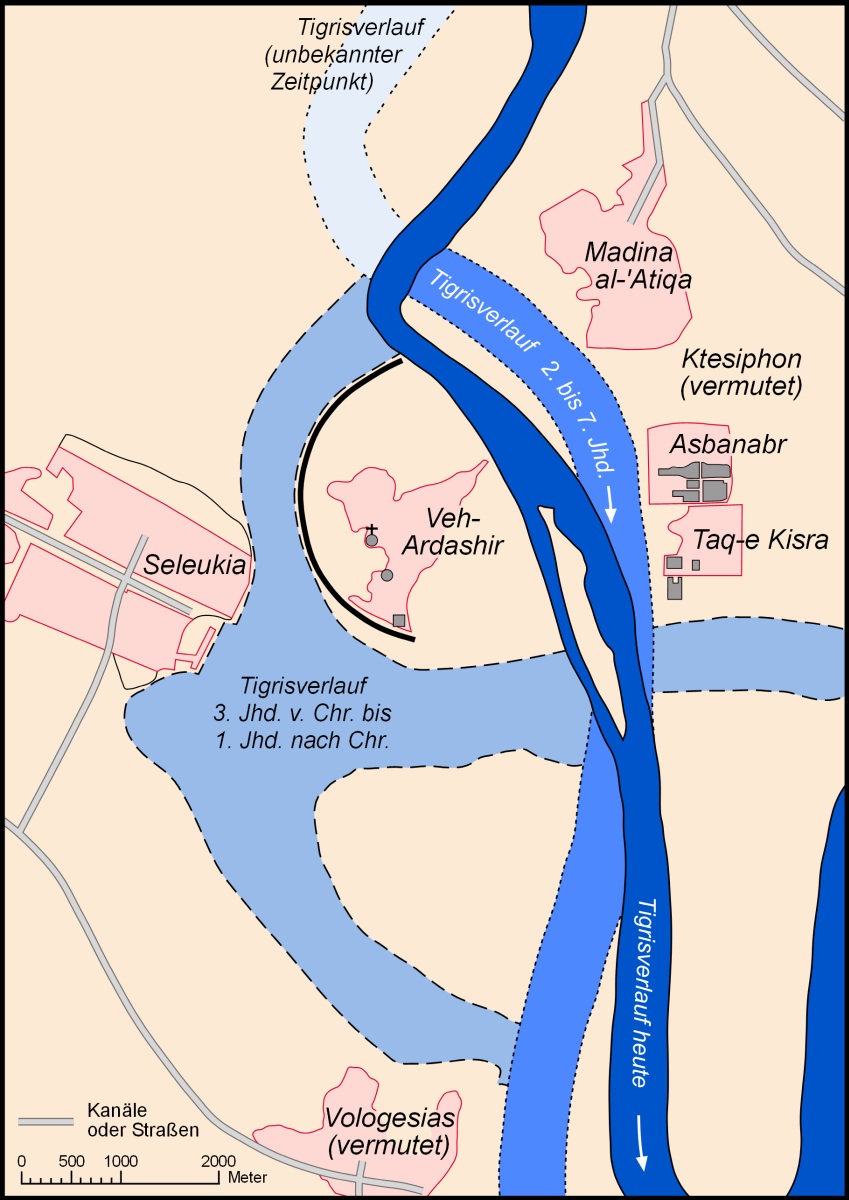
German archeological Map of Seleucia-Ctesiphon during the Sassanian era (Map redrawn by user “Lencer” in Public Domain from original Mesopotamia XL, 2005, 169).
The current phase is financed thanks to a budget of $700,000 from the International Alliance for the Protection of Heritage in Conflict Areas (ALIPH), said Laith Majid Hussein, director of the Iraqi State Board of Antiquities and Heritage. He lamented “numerous mistakes” in the previous restoration, including the installation of a heavy “layer of cement on the arch”. The next stage would be a “total restoration” that would help strengthen the structure and prevent any collapse, he said.
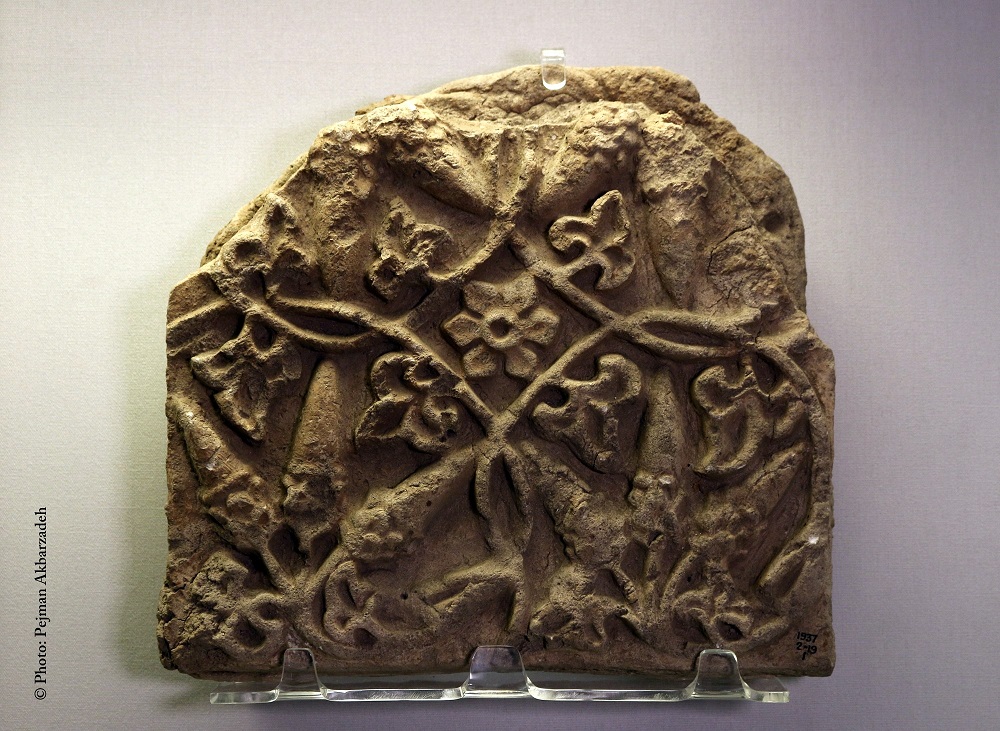
Sassanian stucco from Ctesiphon housed at the British Museum (Photo: Pejman Akbarzadeh).
In 2004, the Global Heritage Fund said that, as a result of disrepair, the arch was “in danger of collapse”. Those warnings proved prescient — in late 2012, a slab about two metres (six feet) in length fell off.
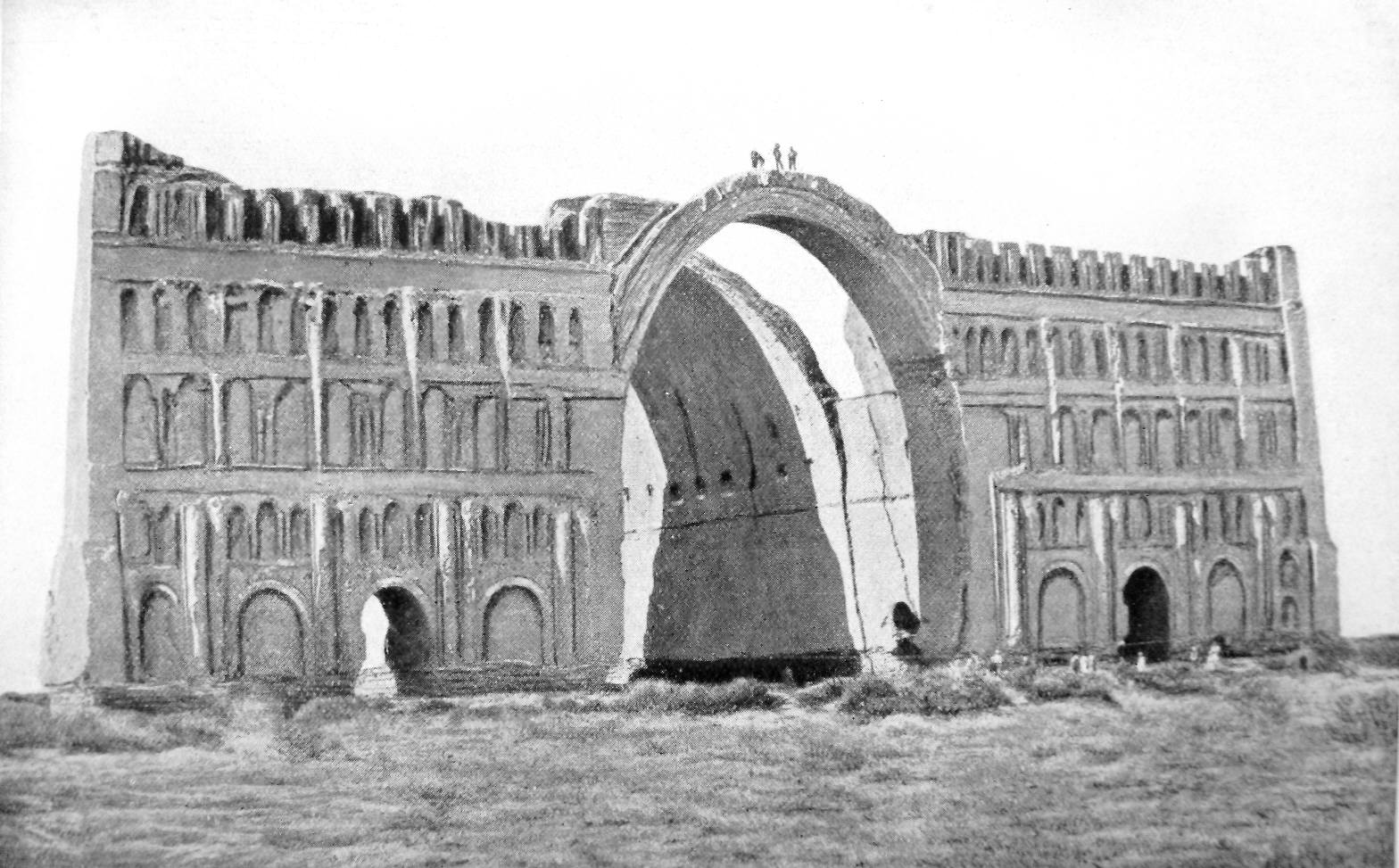
Rare 1864 photograph of the Gateway of Ctesiphon before the right-hand facade of the structure collapsed (Source: Public Domain).



